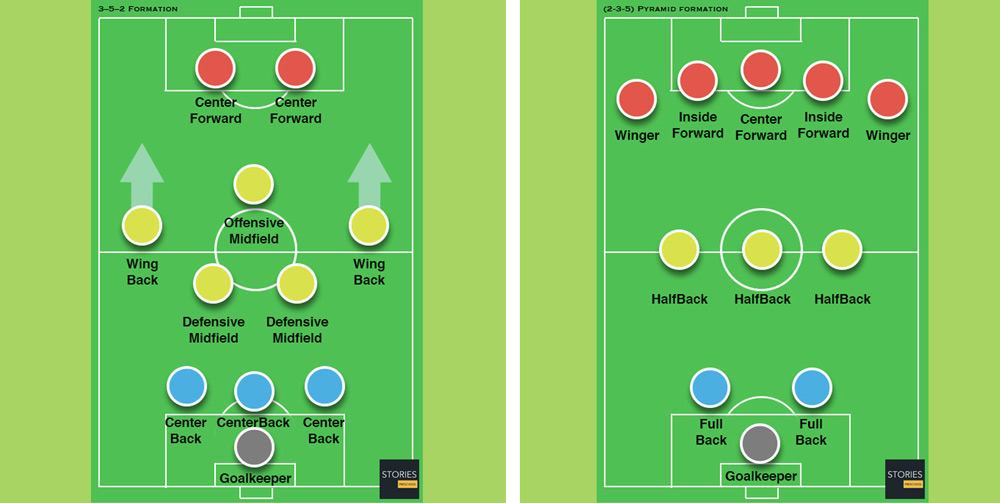01 The Game with No Rules
Echoes of Cryptalia’s Creative Director & Founder, Felipe Millán Zapata, shows up to every meeting with a pile of small paper sheets that he constantly scribbles. This section of our blog comes from his “Notes on Design”, the result of a daily effort of observation, reflection & conceptualization as he leads Open Sky Game’s Creative Team towards their debut game. This is the first article of the series.
It was mid summer, I was 16 years old, and I was using a tree and a watermelon to escape the 35 degrees Celsius of the dry Sun of Santiago’s January. Baltasar, my little brother, was running around the pool with a couple of his neighborhood friends. In somewhat regular intervals, they would get out running to snatch the first pick from a disparate collection of objects (nerf pistols, footballs, sticks, a hose), use them in some unclear way for some indistinguishable purpose, and hurry back for a plunge into the cool water. I think the objective of the latter was to create the biggest splash possible, but who knows for sure. Aside from that, I found myself unable to understand, through observation, exactly what the game was about.
“What ya doin’, nephew”, asked my gray-bearded uncle as he came out from the kitchen to the yard, eating a popsicle. “I was just thinking”, I said as I turned around my head, “that it could be fun to make something like a board game for the kids, only that they get to play it using the pool and toys and all that instead of sitting on a table”. An answer from a growing youngster that loved games all his life, who still didn’t know at the time (how could he) that games would indeed take a lead role in his life as an adult.
“Oh, no, no, no”, he replied quickly, letting out a little laugh. “Why would you do something like that?”. I looked at him baffled for a couple of seconds, as I couldn’t understand what the big problem behind that could possibly be. He took the popsicle out of his mouth and smiled: “They don’t need rules”. He was, of course, absolutely right: I realized then, as I know now, that games are something intrinsic to our human condition (to most mammals, in fact) and, in their purest form, they need no rules whatsoever. It’s only when the access to the “pure form” of the game is lost, that someone who wishes to play needs rules.
Great was my surprise when I finally realized, almost two decades later, that there was indeed a second example of a “game without rules”, one starkly different from the pure game of the mammals: the game of making games. This claim may sound very weird to some of you and I get it. After all, the two games seem almost like opposites: while the pure game lacks rules and enjoys that fantastic, unpredictable freedom, the designer’s game of creating rules is precisely about imposing limits.
Games are a tricky thing to analyze, since one could focus or get lost in the platitude of elements that compose them: from art, to mechanics; from story, to sound. Nevertheless, if we were to start from the beginning, I would say that it’s evident that games are, above all, systems of rules designed to incentivize some behaviors and to exclude others, thus shaping the gaming experience. Rules, which I prefer to call logical systems or simply physics, are the fabric of games, as they set out the combinatorial options or variants offered to players, given a certain group or set of game objects.
Although I apologize for using such dry terms (a necessity if my hope is to write a series of consistent articles, my Notes on Design as I work in Echoes of Cryptalia), I assure the reader that they are quite simple to understand. Just as languages have words and grammatical rules to create infinite sentences, designers use game objects and physics (rules) to create infinite games.
As the word metagame becomes more and more known throughout different gaming audiences, awareness of the effects of modifications, either of game objects or physics, has increased. Evidently, such modifications have consequences in the play patterns of “games as they are being played”. Again, a phenomenon that may read like a mouthful is, in fact, a simple thing – and not new at all. Perhaps some of you know that football (not the American one) presented the world with one of the earliest examples. In 1925, a modification of the off-side rule changed the structure of the game as a whole, from starting formations, to attack/defense interactions, and even corner kick position variations. It provoked changes in player behavior, manager decision-making processes, and even corporate economic policies. A single rule has the power to change every part of the system!

Figure 1. Left: Post-offside rule change 3-5-2 formation. Right: Pre-offside rule change 2-3-5.
While 3 players where needed to rule a pass offside, 2 well coordinated defenders were able to
step forward and annul the attack. This was no longer viable after passes became legal with
only 2 players, which led to a boost in the value of midfielders & their contextual flexibility.
Being indeed quite the tricky thing, no one ever stops learning about game design. I write precisely because now, 16 years after my debut as a game designer in Mitos y Leyendas (a Chilean Trading Card Game and my first job ever), even while holding the position of Creative Director of an exciting new project, I continue to learn and realize new stuff on an almost daily basis.
Through this nascent section of our Blog, I intend to share some of my thoughts, experiences, and sudden realizations as I set out with my team in Echoes of Cryptalia to create a new game. Our enterprise is, now you know what I mean by this, fundamentally a game without rules. Although we’re all now, thank God, grown adults, the drive and passion behind the pure game still walk with us with the same strength. We’re not afraid to use any football, hose, art technique, daring mechanic, or technological implementation to make the best possible game.
With my friend and Co-Founder, Isra, we have a motto: games are fun, games are freedom. That’s it.
And we’re always hungry for a match of The Game with No Rules.

